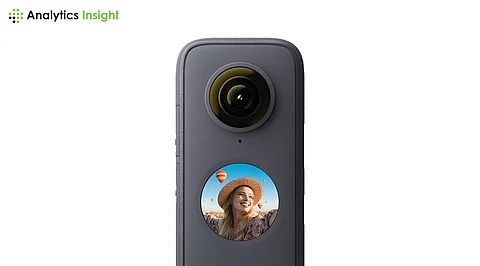

With the changing world in content creation, truly it is that which is needed, fully immersed experiences. That game as far as the producers who would love to give customers an immersive perspective in the marketplace has been defined to be that of 360-degree cameras. From VR into interactive videos or social media posts, 360-degree cameras are there to assist the creator and his team while seeking ways in which to advance viewing experiences up to such an extent that a nearly all-inclusive angle can be included.
These capture the entire surrounding environment and therefore offer unique approaches for engaging their audiences and presenting stories from various angles. Content creators should also find ways of learning this technology since immersive content dominates video sites and social media.
Over time, 360-degree cameras have gained popularity because of their ability to offer experiences that cannot be offered by other cameras. They are mainly useful for content creators involved in activities such as VR filmmaking, travel vlogging, adventure sports, or perhaps social media influencers. Such cameras can contribute to producing views amaze and captivate audiences that static or one-way content could not do.
Through its features, 360-degree content is really a take on viewers becoming part of what is going to happen-thus, an interesting and engaging experience. Considering that growing popular social media bases such as YouTube, Facebook already support 360-degree videos today, 360-degree cameras will be one of the cameras to which any emerging content creator in today's competition and markets will rely on.
Considering choosing one that fits any of the needs for a content creator, here are the most critical features:
Resolution: High resolution is very crucial in achieving sharp and clear 360-degree content. It is, therefore, important to get a camera offering at least 4K or more.
Quality Stitching: It stitches video from different lenses in the camera so finely that even poor stitching quality is seen to have lines quite visibly at seams where parts of video are stitched and ruins the immersive feel.
Stabilization: Most of the 360-degree content is movement, hence stabilized for the best possible footage that does not jerk.
Portability: A portable and lightweight camera is best suited for creators who are always on the move, especially when vlogging about traveling and adventure.
Ease of Editing: The 360-degree video is complicated when editing, thus the camera's software should ease editing, hence saving time and perfecting the output.
Here are some of the top 360-degree cameras recommended for content creators:
GoPro Max: This is the rugged design, excellent image stabilization 360-degree camera that will be used to capture a video in 6K and level the horizon for you, edit it directly within the camera.
Insta360 ONE X2: Extremely compact, excellent image quality, and stabilization features are good. It is ideal for vloggers as it is highly intuitive for producing smooth, cinematic 360-degree videos.
Ricoh Theta Z1: It boasts high-quality images with 1-inch sensors and captures 4K video. This camera is more suited for professional content creators requiring the best possible footage, particularly in low light.
Kandao QooCam 8K: The camera boasts amazing 8K resolution. This makes it one of the highest resolution 360-degree cameras available in the market. It would be ideal for content creators who wish to create high detail content on platforms such as VR and YouTube.
The most important advantage of 360-degree cameras is the boost in viewer engagement. Immersive content allows viewers to explore parts of a scene, as if they were in action. Such interactivity will make viewers glued to the screen for a more extended period, thus increasing the chances of getting likes, shares, and comments on social media.
What most industries, namely travel, events, and entertainment find appealing is the reality of 360-degree videos. It evokes a total environment or event and helps tell a story. When the viewer can view anywhere, there is a stronger connection between the content creator and audience for this to eventually lead towards brand loyalty and follows.
The use of 360 cameras for video production even more immersive and is a source of transformation change. That makes it very uniquely possible to enhance the chances to be distinct while being virtual amongst the virtual mob. It won't matter as to the production of any adventure vlogs for social media content materials, 360-degree cameras used would yield not only one's creativity and an extra dosage with excitement to craft stories before people.
